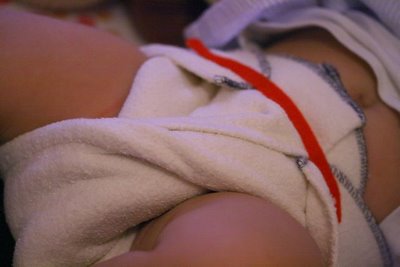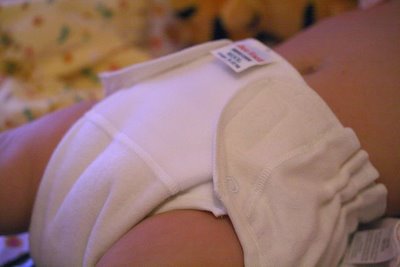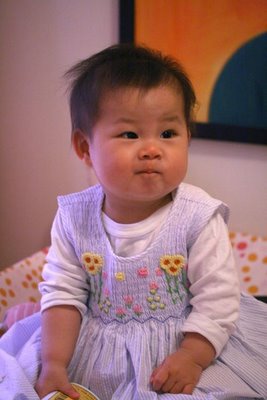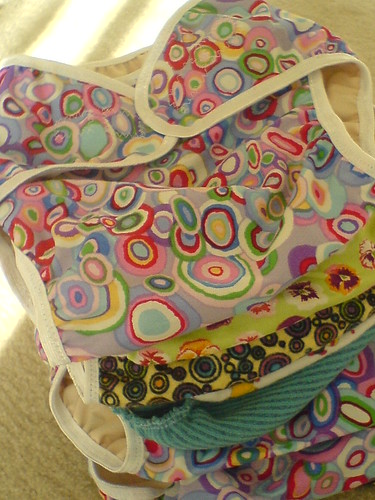More Diapers
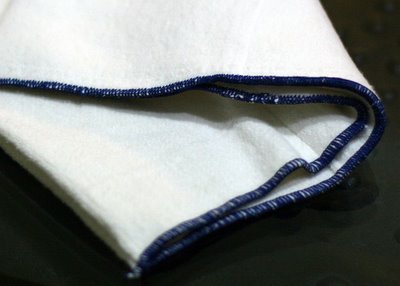
The bread and butter of our cloth diapering system is a hemp fleece pre-fold, which we use with various waterproof covers. I originally purchased a bunch of Polar Babies pre-folds. They worked really well. It is a good, basic system. The hemp fleece is super soft (at least for a while) and is naturally anti-bacterial.
However, we have a German washing machine which has a special wash cycle for diapers (super sanitary). We also live in a downtown apartment with no room for clotheslines. The extra hot water combined with the stress from the dryer means that the fleece pre-folds don't last forever. I bought 36 originally, and we are just now coming to the end of the last ones. They lasted a year, which I guess is not too bad. It is time for some more diapers. I think it will be a while before Gioia figures out how to use her new little Japanese potty, so our stock needs to be replenished. Instead of ordering new pre-made ones, I decided to try to sew them myself. Pretty simple, actually. The hardest part was sourcing the fabric.
I ordered 10 meters of fleece, which yielded 19 Super Deluxe size diapers (23" x 15" unwashed). It also generated a ton of leftover scraps, which I am super excited to use for making dry wipes (more baby gifts - so many friends with babies!).
The Polar Babies Super Deluxe diapers are US$10 each (if you buy at least 12). If I estimate US$50 in shipping costs, then the per diaper cost would be US$12.63. My DIY per diaper price was US$6.47 (with shipping), a little over half of the 'store bought' price. Of course, that cost figure does not include sewing machine and serger depreciation costs,* but only a true geek would talk about capital costs on her blog. Oh. Wait...
Total estimated savings for 19 diapers: US$117. Not bad. I will try to post a tutorial later this week.
*Besides, those are sunk costs. A marginal costs analysis is more appropriate, right?

